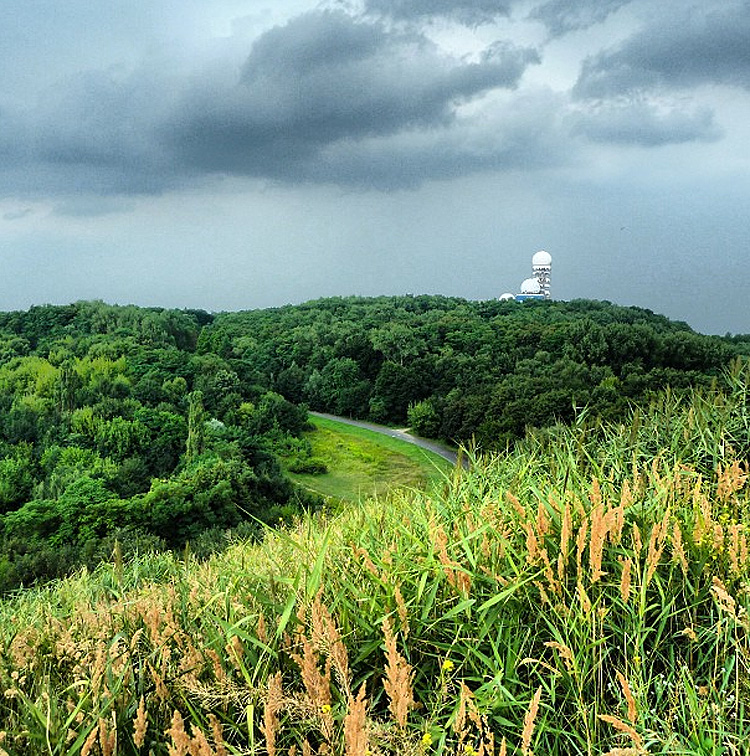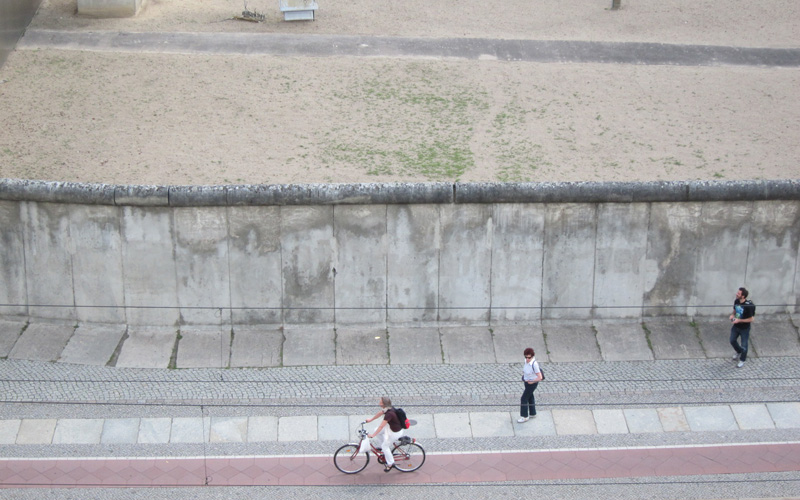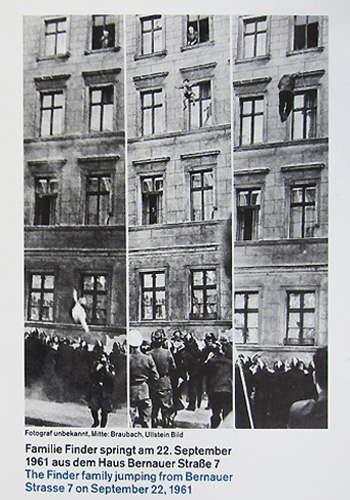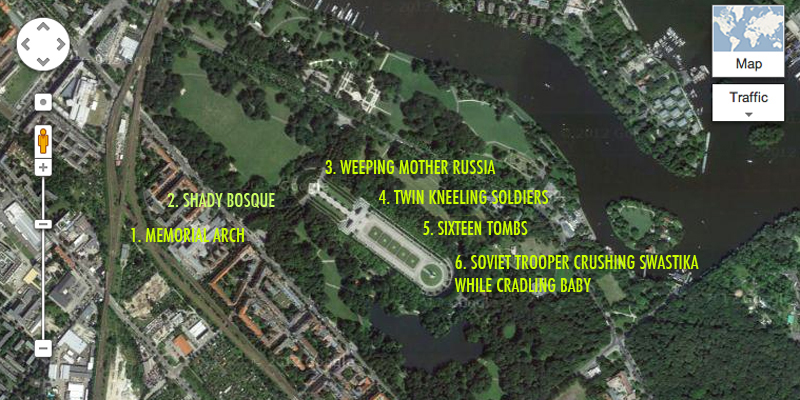
A startling example of adaptive re-use Berlin’s Teufelsberg (or Devil’s Mountain) provides Berlin with the best in all-season sports activity. Recognized among the premier spots for freeride mountain biking in Germany, these popular slopes rising from the forest of Grünewald also provide the very best snow sports, para-gliding and longboarding in Berlin, a modest claim at 377 feet above sea level. Still, as the highest point in the Berlin area it affords spectacular 360 degree visibility of city and surrounding countryside.
Category: east berlin
EAST BERLIN MEMORIALS: LOSS AND TOURISM

 Before last summer we had visited East and West Berlin in 1985 and looked forward to seeing the changes that occurred in the 23 years since the Fall of the Wall on November 9, 1989. Our cultural subconscious held a cache of images of horrid truths and heartless propaganda: juddering film clips of goose-stepping Nazis and skeletal prisoners, Walter Cronkite’s TV voice over of the Wall’s construction, and AP photos of East Berlin escapees in mid-air jumping to freedom or death from walls and walled buildings. The images form a deep, muddy cold-war pool from which the vitality of modern Berlin emerges, staggering out of the emotional depth and intellectual complexity.
Before last summer we had visited East and West Berlin in 1985 and looked forward to seeing the changes that occurred in the 23 years since the Fall of the Wall on November 9, 1989. Our cultural subconscious held a cache of images of horrid truths and heartless propaganda: juddering film clips of goose-stepping Nazis and skeletal prisoners, Walter Cronkite’s TV voice over of the Wall’s construction, and AP photos of East Berlin escapees in mid-air jumping to freedom or death from walls and walled buildings. The images form a deep, muddy cold-war pool from which the vitality of modern Berlin emerges, staggering out of the emotional depth and intellectual complexity.
The marks of last centuries’ history, written with bullets, bombs and barbed wire, still remain visible in places but disappear quickly with the massive new architectural construction of the last two decades. This March protests arose over the demolishing of a long and fantastically graffitied vestige of the Berlin Wall, called the East Side Gallery (listed below), to make way for luxury condos–this in a city only 3/4 occupied. Formerly a symbol of oppression, the Wall has been claimed as a battle trophy by artists and activists who have repossessed the emotional weight of the Wall’s history as a symbol of self expression and threatened freedom. Among the works at the East Side Gallery Dmitri Vrubel’s street art perversely commemorates Erich Honecker and Leonid Brezhnev’s historic kiss, passionately celebrating the 30th anniversary of Soviet control of East Germany, “My God. Help Me Survive This Deadly Love”.
BERLIN SOVIET WAR MEMORIAL: GRIEF, GUILT AND GOOD GRIEF

An aerial view of the Soviet War Memorial in Berlin’s Treptower Park lays out a procession of mourning and remembrance across a landscape and culture. With the Soviet occupiers beginning construction 10 months after the end of the war, the memorial spreads the granite ruins of the Third Reich Chancellory over territory the length of three football fields.
EAST BERLIN/WESTERN ADDITION: CHANGE COMES TO PRENZLAUER BERG…AGAIN
 “Berlin-prettier than ever!” beckons the 1947 prop art poster for Soviet East Berlin’s 5-year plan for the rebuilding of social housing and infrastructure following the devastation of the Allies’ bombardment and the Soviet invasion.
“Berlin-prettier than ever!” beckons the 1947 prop art poster for Soviet East Berlin’s 5-year plan for the rebuilding of social housing and infrastructure following the devastation of the Allies’ bombardment and the Soviet invasion.
Distance provides perspective. Unpacking our mental suitcase from a recent summer holiday in graffitti-bedighted East Berlin, we edit snapshots, positioning them for inevitable comparisons to our own living situation, in our own neighborhood in the Western Addition considering topics of street art, gentrification, bicycles, social housing, memorials and population relocation.
The changes in Berlin have been cataclysmic. A city of 4.5 million in 1939, the population now stands at 3.5 million, 25% un-occupied, uncrowded and affordable. For those with connections to Eastern European immigrants, the absence of a vibrant Jewish culture in Berlin is a palpable loss. The World War and Cold War past is still present in the empty lots, the bullet-pocked plaster, the missing windows, and graffitied squats standing side by side with chic window displays, hot clubs, cool condos and high art.
